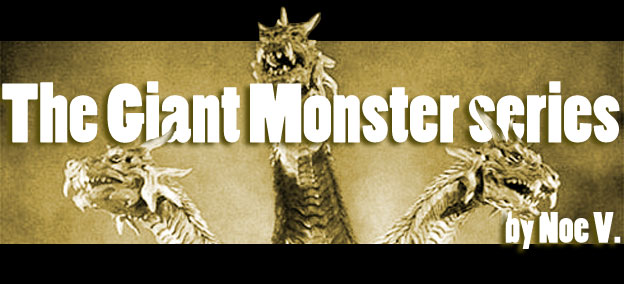
Capcom was creating memorable games featuring gigantic characters before the release of Asura's Wrath. As hardware got more powerful the developers were able to maximize the size and scale of opponents in their titles. Fans of science fiction shooters were sent to remote outposts in the series Lost Planet (2006). Players would come across alien lifeforms capable of swallowing entire trains whole. This was a departure from even the largest opponents in the Resident Evil series. The creatures in Lost Planet could easily snack on El Gigante and the Lake Monster from Resident Evil 4 (2005).

The Lost Planet series introduced many unique monsters to the genre with most of them being gigantic. To help immerse players in the experience the developers placed gamers in remote outposts on extreme climate planets. In the first Lost Planet players fought through the frozen wasteland of E.D.N. III. The harsh environment helped create an isolated feeling for the heroes. Something akin to the John Carpenter movie The Thing (1982). The limited visibility in a blizzard made it possible to have opponents appear out of nowhere and surprise the players. It made the encounters with giant aliens have much more of an impact. In the sequel the frozen wasteland gave way to jungles and desert environments, each of which could be extreme climates as well. The developers incorporated unique game play elements to allow players to navigate the environments and fight the monsters. Wading through the snow would have slowed down the game play tremendously but characters had grappling hooks which allowed them to jump over large patches of land.
Players were also equipped with machine guns that could mow down man and creature alike, and could pick up various types of explosive launchers. In addition to heavy weapons, players could control mechanized suits of armor and even large robots to combat the creatures. The most unique game play elements were based around the monsters themselves. The enormous Salamander was the size of a football field and players could actually get swallowed whole by the creature. Rather than die if eaten, as was the case for most other games, players could continue fighting the creature from within its digestive tract. It was a gross visual but something completely unique to the genre. Lost Planet was not the series that made Capcom a player in the giant monster genre.
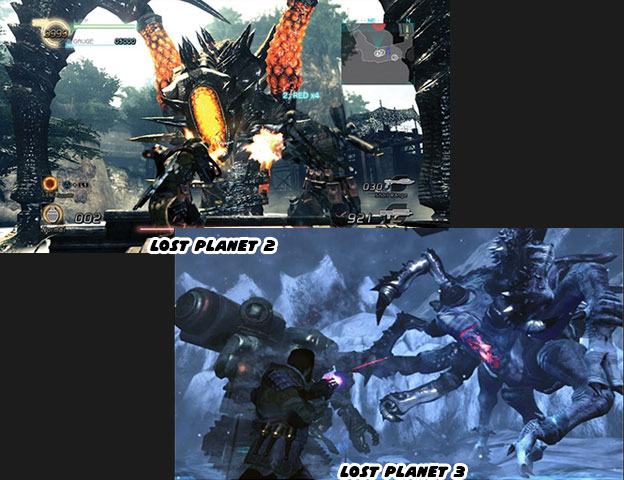
Monster Hunter, released in 2004, was one of Japan's all-time best selling titles. It had appeared on multiple platforms and introduced many an MMO player to real-time action combat. This was opposed to traditional MMO games which required gamers to point and click at their targets and let pre-rendered animations show whether or not they were hitting an opponent. In real-time combat players had to move, dodge and trap monsters just as they would have in an action game. The only difference being that the world was persistent and they could join thousands of other players online at any hour of the day. Like Lost Planet it too introduced unique elements to gamers. There were extreme changes in terrain, day and night and even weather effects to help immerse the players in the fantasy world. The creatures themselves were some of the largest ever created for an MMO or action title. They were a cross between mythological dragons and realistic dinosaurs. Each creature required a plan to defeat. Players could not go in swinging their weapon wildly and hope to take down the largest opponents. Gamers had to learn how to set traps ahead of time, lure monsters, how to regain health and recover from poison if bit. Even specific weapons and armor did more or less damage depending on the creature being fought. Cooperation was the most important element when dealing with the largest creatures but even the mid-sized monsters required a certain level of expertise.
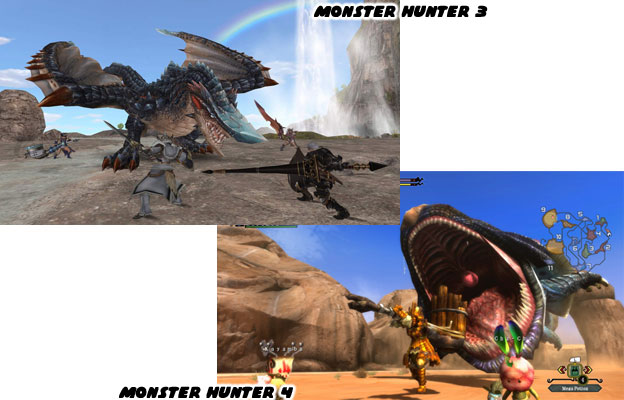
The Monster Hunter universe was set in a fantasy setting unlike the science fiction future of Lost Planet. The weapons in monster hunter had a limited range and were made from enchanted metals or the bones of defeated creatures. This type of game play appealed to different audiences than Lost Planet but that was not to say it could not work for a science fiction MMO. Sega had released an MMO based on their futuristic Phantasy Star Universe some years prior. Phantasy Star Online, released in 2000, had different classes of warriors with science fiction weapons and allowed players to explore regions of an alien planet in solo or group missions. The gameplay of PSO was closer to Monster Hunter than Lost Planet. Even though the characters had Star Wars-like weapons they had limited range so players were forced to get up close to the action for most of the battles. Some players referred to the gameplay as "hack and slash" like the medieval fantasy games.
PSO was originally released on the Sega Dreamcast. Despite the hardware limitations compared to the current consoles, the graphics were well rendered and several of the monsters were titanic in scale. The game eventually found its way to multiple platforms. The character classes and opponents becoming more imaginative as the series continued. The Phantasy Star Online and Phantasy Star Universe servers closed down in 2007 and 2012 respectively however PSO 2 began open beta in 2012 and would be released in 2013 around the world. Players were eager to see the increased scale of the alien monsters based on the new hardware that Sega was developing for.
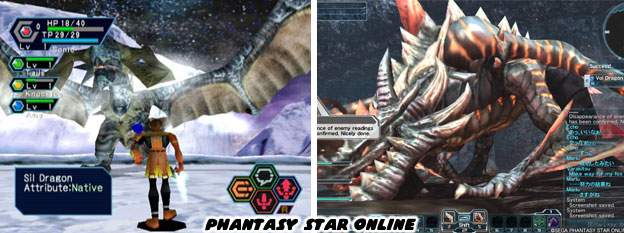
Making a fun and memorable giant monster game took a lot more work than presenting enormous creatures on screen. Like Godzilla and King Kong, the best titles drew audiences into their world. Mass Effect, Resistance, Lost Planet and Monster Hunter all adhered to very specific themes. Players could talk about their favorite levels, locations and visuals from the worlds presented in those games. The studios did a great job placing players in unique worlds but there was much more to learn from cinema. The best films created an atmosphere by layering details that made the giant monsters even more terrifying. The sights of mass destruction, uselessness of conventional weapons and the sounds of people screaming in terror allowed audiences to suspend their disbelief and tap into their primal fear whenever the giant monster appeared on screen. The games mentioned thus far were very well made, however they did not always elicit the same emotional response from the great movie titles. We shall explore a couple of games that did in the next blog.
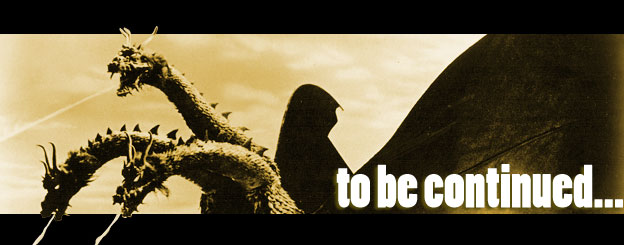
No comments:
Post a Comment